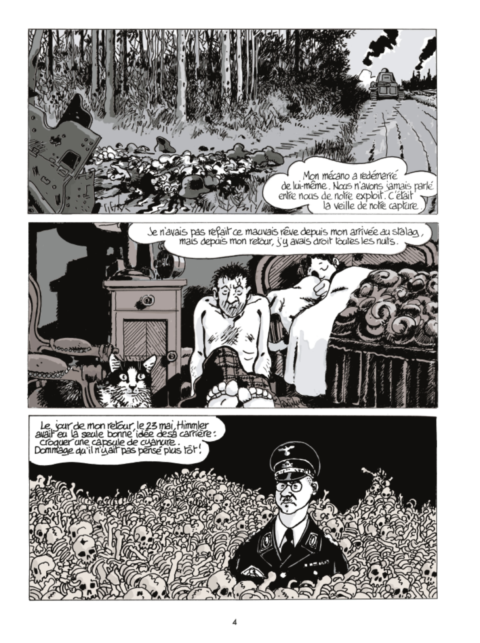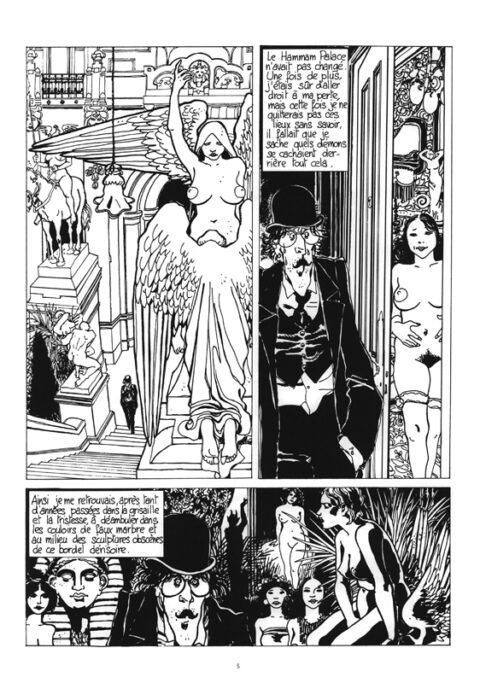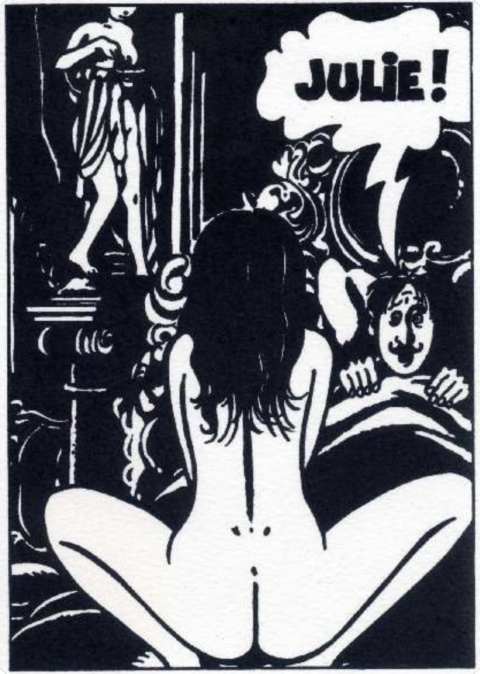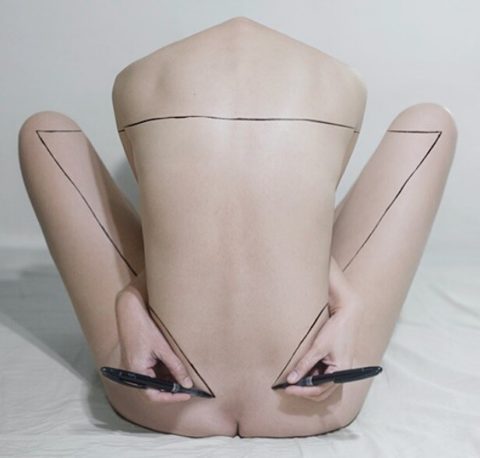so much more to find, hold dearly to what you have.
fruits magazine. a moment in time.
death, destruction, bury your paper goods. i’ll make no mention of the images coated on them, keep those safe at all costs. by lsd
so much more to find, hold dearly to what you have.
fruits magazine. a moment in time.
death, destruction, bury your paper goods. i’ll make no mention of the images coated on them, keep those safe at all costs. by lsd
it’s the feeling i’ve got right now.
but so often, how steadfast i should be. and the tired presses against the weak. the faint’ the brittle. come back to me, i would have to say so. even if it meant nothing to you. they’re just words. they burn some clarity away from assumption.
rightfully so, though once they are mine i make them what i want them to be.
—
or do you not think those things? or that none of this ever happened? instead that i was just so wrong, so plainly false. that i lived something flashing along a blunt edge, something in passing I held so close. placed a mark so off i could not walk it back. and that you gave it no second thought. that you did not leave at all. that could be possible too, i guess, and time makes me only wonder. is this still brave? do you need me more at all? maybe you know just how much I can hold and have never doubted. so you do not worry. and when you come back, i would not ever have either. you would find me as i said, calm. patient. proper. because I’d be right then, that i was once again foolish. pretending to something foreign only totally. and that is why. like a return. something i should expect to happen. and maybe you would never ask what i did in the meantime. and we would not wonder. that I could tell you i will not ask you either. and that would make you certain. that you would be sure to never again. because we are bound. by some glad marrow.
in a breathless cadence
—
for you to keep. i have all i can hold already. place them in my arms. like so. and it would feel like that i’m sure if this was ours. by lsd
carry into the future something that lasts. like accidents, disasters, and cruelty do.
there too – i think about lean-ness and efficiency. desire to cut down ever-further toward a solid hardened state. confusing venture, no less impossible and vile.
little left but to take away is an irredeemable position. i wish no more. i take all. once it is mine. i surely dream.
they were just constantly flying in circles.
constantly flying in huge circles.
(laurie anderson, the beginning of memory)
what about the ten thousand year clock, or the pyramids of germany, the practice of caving. these mass projects of human dominance, in which we take into the unknown (profound or unfounded) the meager seed of our ingenuity. keep mine my own. let it be said that i was there once. such and such. as it were.
if we fit everyone in – just how much could we think, together? the box in the home becomes the home. and what if we stopped living entirely? i was recently told about tangential metamorphosis – how i could no longer be human only without transformation – a neutered permanent alter-state. conniptive reluctance. trespassing human crowding by removing ourselves from humanity.
and if it all went ahead, and then came to an end? do we have the chance to really see it through? lines drawn like aching joints do. by lsd
the golden staircase, edward burne-jones, 1880
in no way do i feel remotely like this toward any of this.
but after the last post it only felt right.
i don’t care about the 21st, i don’t care about your seasons. this is summer. because anyway it’s all fake, julius and augustus – more like julyuck and augussuck as far as i’m concerned. june is the last real month preceeding five months of lies and smokescreens. september, october, november, december. you do the math.
and i can’t capitalize on this godforsaken website. they won’t let me.
and it’s beginning to become too hot for my morning bike ride through the park to my studio if i wear my backpack (which i must). so now i have to invest in a panier but the rear rack will have to be compatible with a mud guard, and both need to be quick release. that means making a big decision as to getting disc brakes or keeping my pad brakes that barely work (but do work). and i’m thinking of switching both cassettes and both derailleurs as they don’t work (for real), and i want disc brakes but that move away from pad brakes is spiritually akin to getting the new iphone every year. and what if my frame can’t house these things, and then i have to get a dumb new bike that i won’t love nearly as much.
my brakes work. i could use the work-out of not being about to shift gears. who cares if my back sweats i’m tall and strong. i want to use capital letters. they’re fine. capital letters work. i need a mudguard. it’s summer god damn it.
is what i would say..
but after looking at the golden staircase and resting my eyes on the masterpiece for a few moments – i want to wish you a great first day of june. i hope that you enjoy it and look forward to the months ahead. rocking and brimming.
the painting itself is perhaps the most potent representation of hope and tenderness in burne jones’ body of work. his pre-raphaelite ties are wonderfully displayed in the painting – yet he grounds himself firmly in the ideals of the movement, we can identify a master pressing to the edges. moving away from what was too often a retread of old virtues de facto we have here a painting of true invention. a thought that careens toward contemplation. then, true observation. wherein the players and their environment are in harmony. sublime. by lsd
last year it was announced that emmanuel guibert had received the prestigious position of head of drawing and etching at the académie des beaux arts. two years prior another cartoonist was also elected to the same post. these two position elections mark the first time in the school’s history that artists from the world of bande-dessinée earned academic leadership positions.
guibert himself behaves rather atypically for a cartoonist, such that his work extends often off of the drafting table, and at times is not present in the bound product. his work is first and foremost reportage. reintroduction and rearragment of historical documents, biographical passages, and journalistic endeavors, to the greater public.
tooling with mark-marking then becomes a gesture in time-appreciation and time-depreciation, as the main bodies of the work (foreground, middle-ground, background, character) each behave with different autonomies. a beachy bank is not substitutable to the soldier warring along it. In the same way that the soldier to his enemy. and yet they are kindred in kind, just like the bank and the soldier are kindred in matter. the problem of representation and depiction in historical/biographical bd is taken head on by guibert in a rhythmic, systematic (bordering just so in an aesthetic) manner.
the relationships between the bodies goes beyond form alone. it all coexists, and yet is appreciable only when it is acknowledged as belonging to different planes.
marjane satrapi opens up the conversation in a wider manner with her seminal work persepolis.
autobiographical, belonging to her child-self, returning to far-away and long-away. the line in satrapi’s work is her hand, it is not representative in that sense – it depicts events. in that way then she is able to go wherever she wishes. she has flattened the dimension of time and space such that they are her’s to recover and pry into freely.
not much more needs to be said here about her work itself. it would be a disservice to the already extensive conversation that has surrounded the comic.
finally we get to tardi. who reaches past guibert’s body of work and satrapi’s persepolis. his work, if we are to continue holding these three together in our arms, neighbors satrapi’s later broderies. As both communicate with the deep past (the past not lived by the author) in an emotional capacity. both authors are trying to assess the past. such that the factual nature of either of their works is structure not content. it braces the emotive potential, the oniric potential of polemical and anecdotal issues, of their works.
tardi, son and grandson of soldiers, bears little resemblance to the patriot of today. for he knows it is person that makes country. it is then country that severs, massacres person. country is not an identity, it is a set of behaviors imposed on person. war happens upon person, not country.

tardi’s line is exquisite in its trustworthiness, it is free to wander with surgical accuracy the depth of human expression. he builds (seemingly from day one) a robust vocabulary of line that continues to serve him throughout his career – changing only to improve and clarify, not to reinvent. in that steadfast manner, tardi opens himself up in a way that an american might understand lynchian routine. do the same thing, eat the same food, appreciate the same landscapes, everyday – dream then, whole and free. ultimately tardi is the progenitor of sturdy lines out which limits seldom cross the reader’s mind.


each of these artists, i want to make clear here, operate with comparable sturdiness. the matter does not change between either. they are cut from the same cloth and it is a wonder that their sensibilities are so closely tender, for as reader it is the great gift of opening any of their books.
they are cut from the same cloth and it is a wonder that their sensibilities are so closely tender, for as reader it is the great gift of opening any of their books. by lsd
there are moments in notre-dame des fleurs that reverbate. they shake the terrain, and the words become buzzing entities. as gesture turns to caress and exchanges pronounce lullabies genet pierces his way in and out of the novel and the novel being told. i refuse to attempt a reading of his work beyond these observations. i refuse to remember the work through anyone else’s eyes and to accentuate other’s lives into the novel. knowing genet’s novel is simply to have read it an innumberable amount of times and to find in it the same tin soldier, the same procession, the same bed, and the same river bank. in that way the novel remains the same as genet wrote it. it is his to traverse and to tangle/untangle. this is his. i cannot wish more from it, as it expresses wholly the desire of his entrapment. willfully pressed against the most unsavory walls.
“oh luke, you wild, beautiful thing. you crazy handful of nothin’.”
“hell, he’s a natural-born world-shaker.”
compare to cool hand luke the condition of captivity. The softness of both genet and luke’s abject desires. in them both i find myself not wanting to go further, neither past the boundaries of what they provide nor into the grating dithering of peoples’ opinion.
salcedo anchors into the seed of this thought reassurance. that as she herself shares of her own work the status of secondary witness to violence. by way of building upon and reconfiguration she pierces the nature of the objects under her gaze, into testaments. their claims to violence solidified by the intervention she musters. enclosed or gouged, the object is preserved – so then is maintained its potential for ongoing intrusion.
pressing into the comet, trailing such as it is by lsd
lily anna hayes reading a text that might surely make timothy morton proud.
it moves me so profoundly.
it is everything but not all.
warm excess materialism.
i sure love it with all my heart..
prompting an unchanged discovery by lsd
echo, at once dead and very much alive, alone maintains narcissus’ beauty. his claim to self, that, as gaston bachelard puts it, becomes as is reflected. “je veux paraître, donc je dois augmenter ma parure.” (bachelard, l’eau et les rêves, 1942, p. 34).
the gentle stream brims with cosmic rigidity. the bank of clear waters, where things rest and can be thought to have been made, is where they take the form they pictured. a demented slumber. hypnosis. really, it is only in the depths of cloudy/violent/ruthless bodies that material imagination is most potent. there we can truly delve into matter, to find ourselves in the midst of that most gentle and fragile condition: excess. only wade these waters.
wherein do we bridge and travel past form, into matter. to much relief bachelard affirms “la matière est l’inconscient de la forme”. it is within then. materialistic phenomenology allows us this oneiric passage from one into the other.
but echo is also 34 years old. it is the life work, masterpiece, of developer and new yorker stacy holt. where form is the passkey to matter. a message board of few members, it once held great interest for a kind of crowd capable of hanging together. artists, writers, students, politicians, musicians, designers, doers, all under the banner of “and now?” a place to congregate and produce desire. a moment of permanent instigation that has been housed in a thoroughly complex mechanical network. grinding out the signals into something truly malleable that allowed its participants to call and answer to “and now?” in plastic reverie.
indeed.
though it has always been that paste, this originating material of dreaming and entry into, this giving molasses, hardens and brittles when it is driven away from its source. gross doing. mean endeavor. potential in progress left solid. scorched earth, salted terrain, prey to a drying heat. crackling sound, echoing unto itself into a vast murmur.
who decided this?
because once it’s all finished, and what we bathed in can now be held, all that will be left to ask really will be “and now? “ by lsd
painting works by phil hale.
not included is his portrait of pm tony blair.
fight war not wars ..
fight war not wars ..
fight war not wars ..
fight war not wars ..
thanks crass,
that’s very true. by lsd
strange work brewing in the mind of animator s e e t h r o u g h..
this latest piece ‘union’ stirs and whirs.
similar exploration of malleable and sinking bodies is the fascinating series ‘distortion’ by photographer andré kertesz.
done in the 1930s working with, and around, dada.
the book, while out of print, can be found – and should be sought out.
a few years later photographer bill brandt may have found similar distortion, in a bombed-out staircase.
On days like these, for moments like these. by lsd
george porcari x roland barthes – still life with books
george porcari x michelangelo antonioni
THINGS: A STORY… if you are in cali, be sure to visit george porcari’s exhibit at “as is gallery” on 1133 venice blv in los angeles. one of our favorite contemporary artists on the west coast. the show is up from april 22, 2023
george porcari x roberto rossellini
“these still life works were started in 2008 and continue, on and off, to this day. i have been in a deep immersion with books from early on when my dad would regularly take me to the gardena public library – he hated buying books and loved to read. from being an avid reader i went to work at the strand bookstore in new york city in 1980…”
george porcari x john cassavetes
george porcari x joan didion
george porcari x jean luc godard
george porcari x jean luc godard
“i never considered reading something one does strictly for “self-improvement” (god forbid) or even for pleasure, although these may play a role. my primary reason for reading was to enter into a relationship with an author that could, ultimately, transform my brain – in effect one is a different person after reading a book with which one has had a profound emotional connection. that’s what you look for in books – transformation, ecstasy, understanding, communion. these are some of those books in my life…”
george porcari x james joyce
george porcari x charles bukowski
george porcari x cesar vallejo
“while working in the library i would get a cold every new year like clockwork – always during our three week year end vacation. in 2008 i decided to turn my self-isolation to working from home by making still life’s – a genre i had never liked (and still don’t like) in paintings or photography. all the pictures were shot in my apartment using natural light and/or the light available from nearby lamps. the title of the show things: a story comes from georges perec’s wonderful book things: a love story. while i may have removed the word “love” from the title i think love is very much at the heart of the matter when it comes to these particular books, and the still life’s are a small way of paying back and saying thanks.” – george porcari, 2023
some notes by judy zellen on the exhibition including discussions with the artist: “the subject of each photograph in george porcari’s exhibition things: a story is a narrative that can be constructed from the relationship between what appears on the cover of a book and the objects porcari has also placed around it in the image. titled still life with books, each picture is followed by a number and dated 2008-2023. Shot with natural light in porcari’s los angeles apartment, the pictures have wide-screen proportions to reference cinema, yet are tightly cropped to juxtapose the books with carefully arranged commonplace household objects. while many of the volumes are about filmmakers such as jean-luc godard, michelangelo antonioni or roberto rossellini, others are works of literature by authors like joan didion, roland barthes, charles bukowski and georges perec. the choice of books is specific and in many of his photographs, porcari has chosen a book where a black and white portrait of the author or filmmaker is centered in the frame.
though referred to as “still life’s,” the photographs in things: a story resonate as extended portraits that use the title of the book and its cover image as a point of departure. for example, in still life with books 2, porcari chooses the edition of “roland barthes by roland barthes” where the author is depicted in a black and white photograph with his right hand gently placed below his lips as if in a moment of contemplation. the book rests on what appears to be a slim, silver DVD player or radio receiver next to a pair of headphones, a green ceramic bowl with asian calligraphy, as well as other miscellaneous objects that are cut off at the edges.
The focus of Still Life With Books 40 is joan didion’s “the white album.” porcari places the hardback book in an empty freezer and stands it upright on one of the shelves, perhaps in reference to this passage: “we live entirely, especially if we are writers, by the imposition of a narrative line upon disparate images, by the “ideas” with which we have learned to freeze the shifting phantasmagoria which is our actual experience.” during a conversation with porcari at the opening, he intimated that he put the book in the freezer based on his close reading of it.
still life with books 47 features a paperback version of “godard on godard” face up on a table surrounded by various computer cables and hard drives. the bright red lettering on the books cover is echoed by the round top of a pill bottle as well as the red heart in a “i heart…” button that is partially obscured by the aluminum arm of a desk lamp. the black and white photograph surrounded by red text on the cover of the book depicts a couple gazing into each other’s eyes with the woman’s hand gently placed on the man’s neck. underneath the book is a cartoony drawing of a white gloved cartoon hand (perhaps from bugs bunny) on blue material, that appears to be an extension of the man’s arm, adding a touch of humor and irony to his representation.
still life with books 130 contains césar vallejo’s “aphorisms” placed in a grimy sink and shot from above. the book is next to the drain and adjacent to a soapy cup from which an orange handled utensil emerges. again, porcari selects a volume with a black and white portrait of the author with his hand curled around his chin. the grainy image has an affinity with the texture of the sink. why it is placed there is anyone’s guess, but like didion’s book in the freezer, this strange juxtaposition makes for an interesting image.
although porcari’s photographs are filled with cultural icons and references, they are not one liners directed to those in the know. they are intimate and personal images that include books that are significant or have personal meaning for porcari. they are also beautiful and intriguing photographs that invite viewers to think about the bigger picture and perhaps the relationship between their books and the other objects that surround them.”
read read more of judy zellen here … start taking notes people… – by uh
mirror illusions by lin yung cheng

lin yung is a photographer and art director who loves to experiment with optical illusions and whimsical compositions to create images that draw the viewer into their spell. his photographs are on the edge between beauty and bizarre using a sense of poetry and grace in his work. he has a really particular style of working which is minimalistic and ethereal aesthetics. by kn